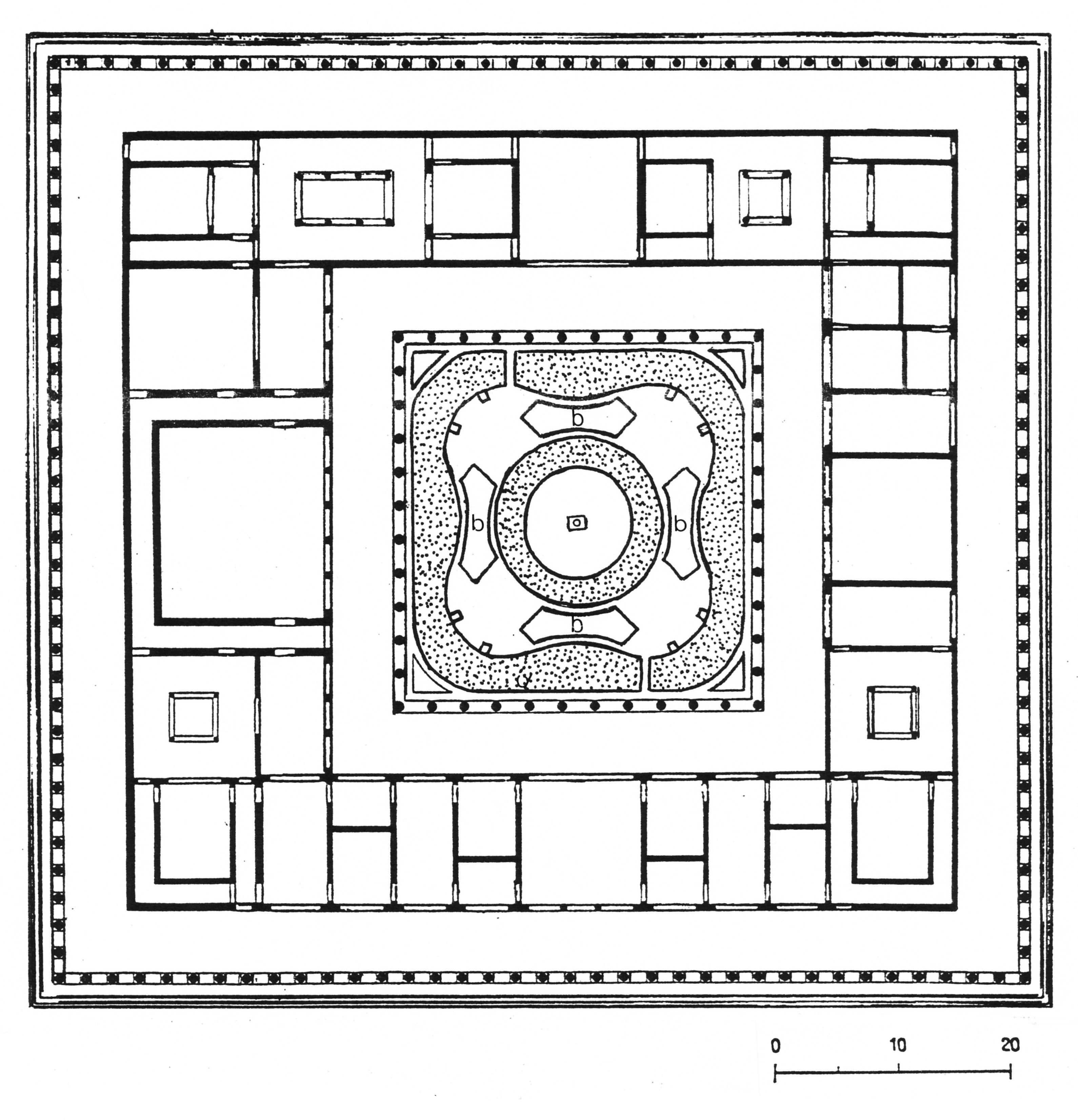Leonidaion
Province
Province Description
Roman intervention in Greek political affairs resulted in conflicts that led to the destruction of Corinth in 146 B.C. and the sacking of Athens in 86 B.C. It was not until 27 B.C., however, that Augustus formally organized the Roman province of Achaea. Achaea consisted of the cities and territories of the southern Greek mainland between the Peloponnese and Thessaly, as well as Epirus in the northwest and the Ionian and some of the Aegean islands. The provincial capital was Corinth. Under Nero in the mid-1st century A.D. Epirus became a separate province, and in the mid-2nd century Thessaly was detached and added to the province of Macedonia. Under Roman domination many cities such as Athens, Sparta, Patras, and Corinth grew in size and prominence, the latter two partly owing to their importance as ports. After an initial decline in the number of rural sites in the early Empire, by the late Roman period the countryside was densely settled with farms and villas, due to changing landholding patterns and Roman improvements in agricultural and irrigation technology. The main exports from Achaea were wine, particularly from the northern Peloponnese, as well as olive oil and honey, linen and woolen textiles and marbles.
Location
Garden
Leonidaion
Keywords
Garden Description
This building southwest of the temple of Zeus was the largest guest house in the sanctuary at Olympia. The original Leonidaion, a gift of Leonidas from Naxos, was built shortly after 338 B.C. with a central courtyard. In the 2nd century A.D. the building was remodeled, and this courtyard was transformed into a veritable water garden (Fig. 1). The garden consisted of an outer quatrefoil island surrounded by a water channel (stippled on plan), and in the middle of this island was another circular one around which ran a second water channel (stippled on plan). On the quatrefoil island were planting beds (b on plan) in the middle of the four sides and sculptures in each of the rounded corners. This island could be reached by a bridge spanning the outer channel on the north and south sides. The central circular island was not accessible by such bridges. During the earthquake in the late 3rd century, the building was badly damaged and not rebuilt in this form.
Plans

Fig. 1: Plan of the Leonidaion with its quatrefoil and circular gardens (white) and planting beds (b) surrounded by water channels (stippled) in the courtyard. Adapted from Mallwitz 1972, fig. 201.
Dates
2nd-3rd century CE
Bibliography
- A. Mallwitz, Olympia und seine Bauten. Munich,1972, pp. 276-277, fig. 230. (worldcat)
- R. Tölle-Kastenbein, Antike Wasserkultur. Munich, 1990, p. 192. (worldcat)
Pleiades ID
TGN ID
Contributor
Maureen Carroll (ORCID: 0000-0001-9958-8032)
Publication date
21 Apr 2021